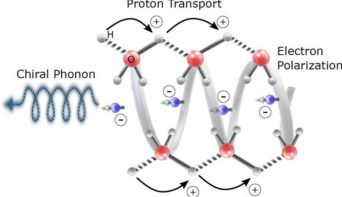
Quantum mechanics wreaks even more havoc with conventional ideas of causality than some have suspected – according to a team of researchers based in Australia, with collaborators in Scotland and Germany. They have shown that even allowing causality to be nonlocal – so that an event in one place can have an influence on another, distant place – is not enough to explain how quantum objects behave.
Without cause and effect, science would be impossible. You could never use an observation to deduce anything about the underlying mechanism that caused it. But quantum mechanics challenges our commonsense picture of causality – for example by implying that some things happen at random, with no apparent cause, or that an action in one place can seem to have an effect elsewhere, even if the two locations cannot interact.
This kind of nonlocality has become widely accepted in quantum theory, thanks to experiments on so-called entangled states. Here two or more quantum entities, such as photons of light, acquire interdependent properties, revealed by correlations in the measured values of their properties. For example, pairs of polarized photons can be entangled so that, if one has horizontal polarization, the other has vertical polarization.
Action at a distance?
Because quantum properties have inherent randomness, these correlations are typically revealed in averages of many measurements. The twist is that quantum mechanics seems to insist that these properties are not fixed until they are measured. This seems to imply that a measurement on one entangled photon affects the other instantaneously across space.
Perhaps quantum mechanics is incomplete, though, and the properties were actually fixed within the particles all along. This “local realist” picture, in which quantum particles have intrinsic, localized properties even if we can’t see them directly, was assumed by Albert Einstein and colleagues in 1935 when they argued that such instant action at a distance creates a paradox for quantum mechanics.
But after Northern Irish physicist John Bell showed in 1964 how to distinguish between the predictions of local realism and those of quantum mechanics, numerous experiments have shown that the quantum picture seems to be correct. There’s no real instantaneous action at a distance, because we can’t think of the measurement on one particle as “causing” some “effect” on the other.
Painting a realist picture
It’s still possible, however, to explain Bell-type tests of quantum correlations in a “realist” picture (where quantum objects possess fixed properties before measurement) if other of his assumptions are rejected. If, say, causation itself were nonlocal, so that an intervention in one place is felt elsewhere, then a measurement on one photon might directly influence that on the other, creating the correlation between them.
The new experiments, says Martin Ringbauer of the University of Queensland, who led the Australian group, “consider this class of realist models, where Bell’s central assumption of local causality is relaxed.”
To test whether a realist but nonlocally causal model is able to explain quantum phenomena, the team devised Bell-type experiments where such a model makes different predictions from quantum mechanics. First they performed a modified version of one of the earliest such experiments on entangled photons in the 1970s, called a Clauser-Horne-Shimony-Holt (CHSH) test.
Causality, not correlation
To test for causal effects and not just correlation in this test, they did not simply make passive measurements of photon polarization but actively intervened to change the outcome. “Imagine you are watching someone flick a light switch and observe that the light goes on and off in perfect correlation”, says Ringbauer. “You can’t tell whether the switch causes the light to go on, or the light going on causes the person to flick the switch, or there is some hidden common cause that is responsible for both the light going on and the person flicking the switch.”
However, if you’re in control of the switch yourself, you can tell the difference. In their experiment, Ringbauer and colleagues fixed the outcome of measurement on one photon by inserting optical devices that affected its polarization before the measurement was made. They then looked for a concurrent change in the statistics of the other. Because they saw none, they concluded that there could be no nonlocal causality at play in which measurement outcomes on one photon could cause changes in those on the other.
The team then did a more complicated experiment involving three possible measurement settings as opposed to just two for the CHSH experiment. This allowed them to verify that their conclusions are independent of the specific apparatus used to do the tests. In other words, the results do not depend on any particular type of intervention.
Radical revisions
The only way now that one might rescue some kind of classical (realist) causal interpretation of quantum correlations involves more radical revisions of Bell’s assumptions, says Ringbauer – for example, backwards-in-time causation or a “many-worlds” interpretation of quantum mechanics with multiple parallel universes.
Caslav Brukner, a quantum theorist at the University of Vienna, told physicsworld.com: “I like the work since it excludes a large class on nonlocal causal theories.” Previous tests looked only at a very specific version of such theories, he adds.
The experiment “is not only important from the perspective of quantum foundations, but might also have implications in quantum cryptography,” says Ognyan Oreshkov of the Free University of Brussels in Belgium – for example in cases where one can’t guarantee that the measurements made by the sender and receiver are kept secret.
The research is described in Science Advances.



